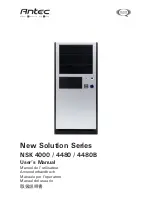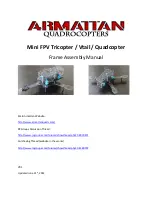
Copyright © 2018 Nortek Security & Control LLC
1
PRINTER’S INSTRUCTIONS
INSTALL INSTRUCTIONS SHOCK/DOOR / WINDOW CONTACT 2GIG-SHKDW1-345 - P/N: 10021991 X8 - INK: BLACK - MATERIAL: 20 LB. MEAD BOND - SIZE: 11” x 17” (8.5”+8.5”) COVER: PRINT 1ST AND 4TH PAGES / INSIDE: PRINT 2ND
AND 3RD PAGES - TOL: +/- 0.125”- SCALE: 1-1 - FOLDING: TO FIT BOX - FINISH WITH PAGE 1 LOGO SHOWING - SIDE 1 OF 2
2GIG-SHKDW1-345
Shock/Door/Window Contact Sensor
INSTALLATION INSTRUCTIONS
The Shock/Door/Window Contact Sensor (2GIG-SHKDW1-345) is
designed for use on doors, windows, and other objects that open
and close. It communicates with the control panel using the 345 MHz
frequency. When the surface it is mounted on is struck with sufficient
force, signals are sent to the control panel. Additionally, when the
magnet (which is mounted near the sensor) moves away from or
closer to the door contact’s sensor, signals are transmitted to the
control panel. For added protection, it is also equipped with a cover
and magnetic tamper detection.
Magnetic Tamper Detection
The 2GIG Shock/Door/Window Contact Sensor is equipped with
Magnetic Tamper Detection. When enabled (see Enable / Disable
Magnet Detection) the device can detect if a foreign magnet is brought
within it’s detection range. This will trigger a Tamper alert to the control
panel indicating a possible attempt to bypass the device.
If this were to occur, the device will stop transmitting and a Loss of
Supervision will be noted at the control panel. To clear this event, the
Shock/Door/Window Contact Sensor will need to be re-calibrated (see
Calibrating Magnet Detection).
Figure 1. Shock/Door/Window Contact Sensor and Magnet
C
A
B
B
A
A
D
C
Under Circuit Board
A
Shock/Door/Window Contact Sensor
B
Magnet alignment Marks on Sensor
C
Shock/Door/Window Contact Magnet
A
Screw mounting holes
(on backplate)
B
Programming Button
C
CR2450 Lithium battery
(under circuit board)
D
Battery Access Slot
●
1 — Shock/Door/Window Contact Sensor
●
1 — Rare Earth Magnet
●
2 — Phillips Head Mounting Screws
●
1 — Lithium Coin Battery (Installed)
●
2 — Adhesive Foam Tape (pre-applied on sensor and magnet)
●
1 — Window Warning Sticker
Box Contents
Verify that the package includes the following:
Testing The Shock/Door/Window Contact Sensor
Before mounting the contact at the desired location, learn it into the
control panel. Then, perform a walk test utilizing a shock event as the
test transmission to verify that it can establish good Radio Frequency
(RF) communications with the control panel.
NOTE:
To learn how to program and fully test the Shock/Door/Window
Contact Sensor, see the control panel’s
Installation and Programming
Guide.
For 2GIG
panels using older irmware, this sensor may be
learned in as a D/W device. Newer panel
f
irmwares will support
shock detector equipment code type 1066
.
Mounting Guidelines
Use these guidelines when installing the sensor:
●
Mount Sensors within 100 ft (30 m) of the Control Panel.
Although the transmitter may have a range of over 500 ft (150m)
open air, the sensor location can have a significant effect on
range. In open/unobstructed situations, the transmitter range may
be greater. In adverse wireless conditions, changing the sensor
orientation may lead to improved range.
●
Mount Sensors at Least 4.7 in (12 cm) Above the Floor.
Placing
sensors slightly above floor level helps to minimize possible sensor
damage.
●
Window Shock and Sliding Door/Window Installation:
Mount
the Shock/Door/Window Contact Sensor on the fixed pane window
1” from the frame for optimal performance. Place the sensor on the
moving section of the door/window and the magnet in a stationary
location. The included magnet must be within 2” of the sensor. If a
wider gap is required, up to 5”, use the optional DecoTrim Magnet
(p/n 2GIG-DECOTRIM).
●
Do Not Expose Sensors to Moisture or Extreme Temperature.
It is best to mount sensors in a dry location where the operating
temperature does not exceed 0° to 130°F (-18° to 54°C).
●
Keep Sensors and Magnets Away from Metal/Metallic
Surfaces.
Keep sensors and magnets away from metal or metallic
surfaces (for example, foil). You should also avoid mounting
sensors in areas where there is a large quantity of metal or
electrical wiring (for example, near a furnace or in a utility room).
NOTE:
Use on metal doors and windows with metal frames will
significantly impair the performance of this sensor.
Mounting The Shock/Door/Window Contact Sensor
Use the figure below as a guideline when mounting the contact.
Figure 2. Backplate and Battery Compartment
1”
1”
Sensor
Magnet
1 to 2”
Sensor
: Install one inch
from the edge of the glass.
Magnet
: Install 1 to 2
inches from the Sensor.
Figure 3. Standard Glass Mounting
To mount the Shock/Door/Window Contact Sensor:
Remove the backing form the pre-applied double-sided tape on the
bottom of the Sensor and place in the desired location.
NOTE:
When mounting on a glass window, place the device one
inch from the top or bottom and side edge of the window.






















